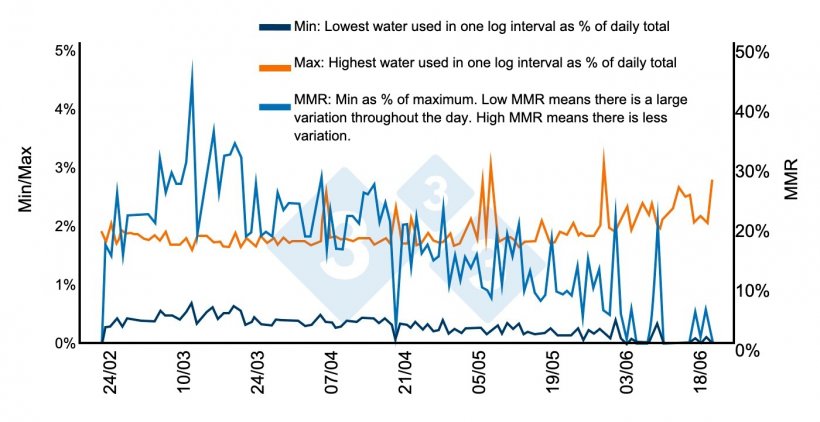It is not uncommon to find producers who offer medication to pigs in their water for only a few hours per day to ensure they are taking the correct dose and that the product is in perfect condition. However, the timing of the medication will depend on the pigs’ drinking pattern. Knowing the pattern of pig behavior when drinking is therefore essential for effective treatments.
Numerous studies have been carried out to try to understand what pig drinking patterns are.
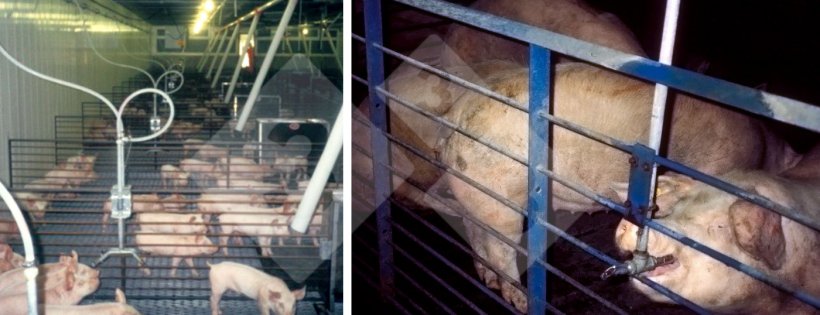

Johnson et al. (2007) evaluated the time required for 100% of the piglets to access the drinker (≥ 5 sec.) at least 1 time per day to determine the time needed for the administration of a given product. His experiments found that the best time is morning and during a period of about 6 hours, specifically from 7:00 to 13:00 (see table).
Table 1. % of piglets visiting the drinker at least once. Source: Johnson, et al (2007).
| Day | Pen | Nº piglets | Sex | Time | ||
|---|---|---|---|---|---|---|
| 7:00-9:00 (2 h) | 7:00-11:00 (4 h) | 7:00-13:00 (6 h) | ||||
| 1 | 1 | 23 | M | 91 | 96 | 100 |
| 2 | 26 | F | 100 | 100 | 100 | |
| 3 | 23 | M | 87 | 100 | 100 | |
| 4 | 25 | F | 92 | 100 | 100 | |
| 2 | 5 | 25 | F | 100 | 100 | 100 |
| 6 | 24 | M | 79 | 100 | 100 | |
| 7 | 24 | F | 96 | 100 | 100 | |
| 8 | 26 | M | 100 | 100 | 100 | |
| Average | 93.1 | 99.5 | 100 | |||
Other researchers (Jackson et al. 2008) sought to determine whether it was better to subject the animals to a water deprivation period before taking a medication. The conclusion was that all pigs visited the drinker between 7:00 am and 1:00 pm, so withholding water for 15 hours to encourage consumption of medicated water does not seem to be a recommended measure.
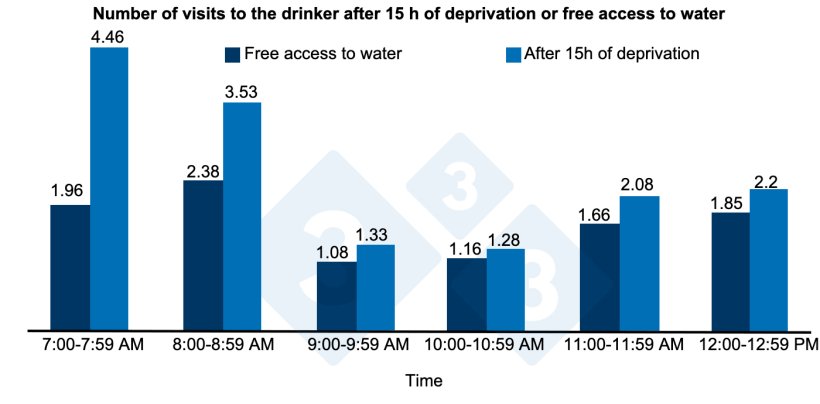
All pigs visited the drinker during the period of 6 h. The control piglets performed fewer total visits and spent less time in the trough than the water-deprived piglets.
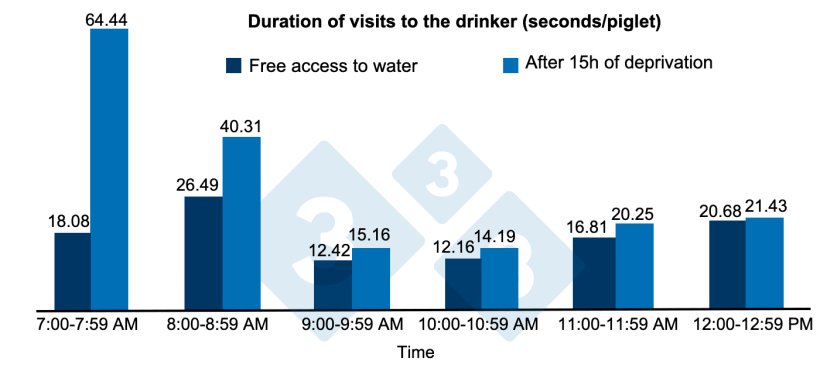
Water-deprived piglets spent more time in the trough and visited it more often than control piglets only during the first hour after restoring the water.
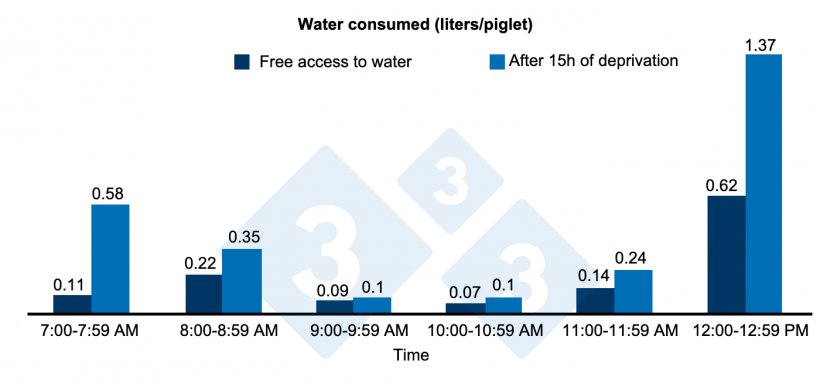
23% of water-deprived pigs visited the drinker = 21 times, compared to 6% of control pigs. 64% of water-deprived piglets spent = 121 seconds at the trough compared with 26% of control pigs. Water consumption was greater for water-deprived piglets.
The ambient temperature can affect the pigs’ demonstrated pattern of drinking and two distinct patterns were found: one summer and one winter. In summer the pigs tend to be inactive during the hottest hours and this is reflected in their pattern of drinking.
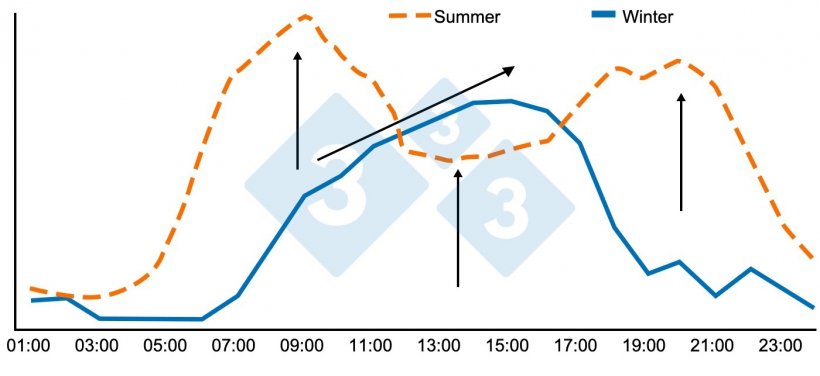
When we talk about treating drinking water we almost always think of hogs in the growth and fattening phases, but increasingly sows are now often treated through the water as well. It will therefore be important to know how the sows drink. In the case of pregnant sows, they will drink according to their feed pattern. There are peaks 2 hours after feeding in the morning and 1 hour after doing so in the afternoon (Olsson and Andersson, 1985). However, with lactating sows, the pattern will be very different. The lactating sow consumes water multiple times during 24 hours, following the pattern of milk production (Brumm, 2006).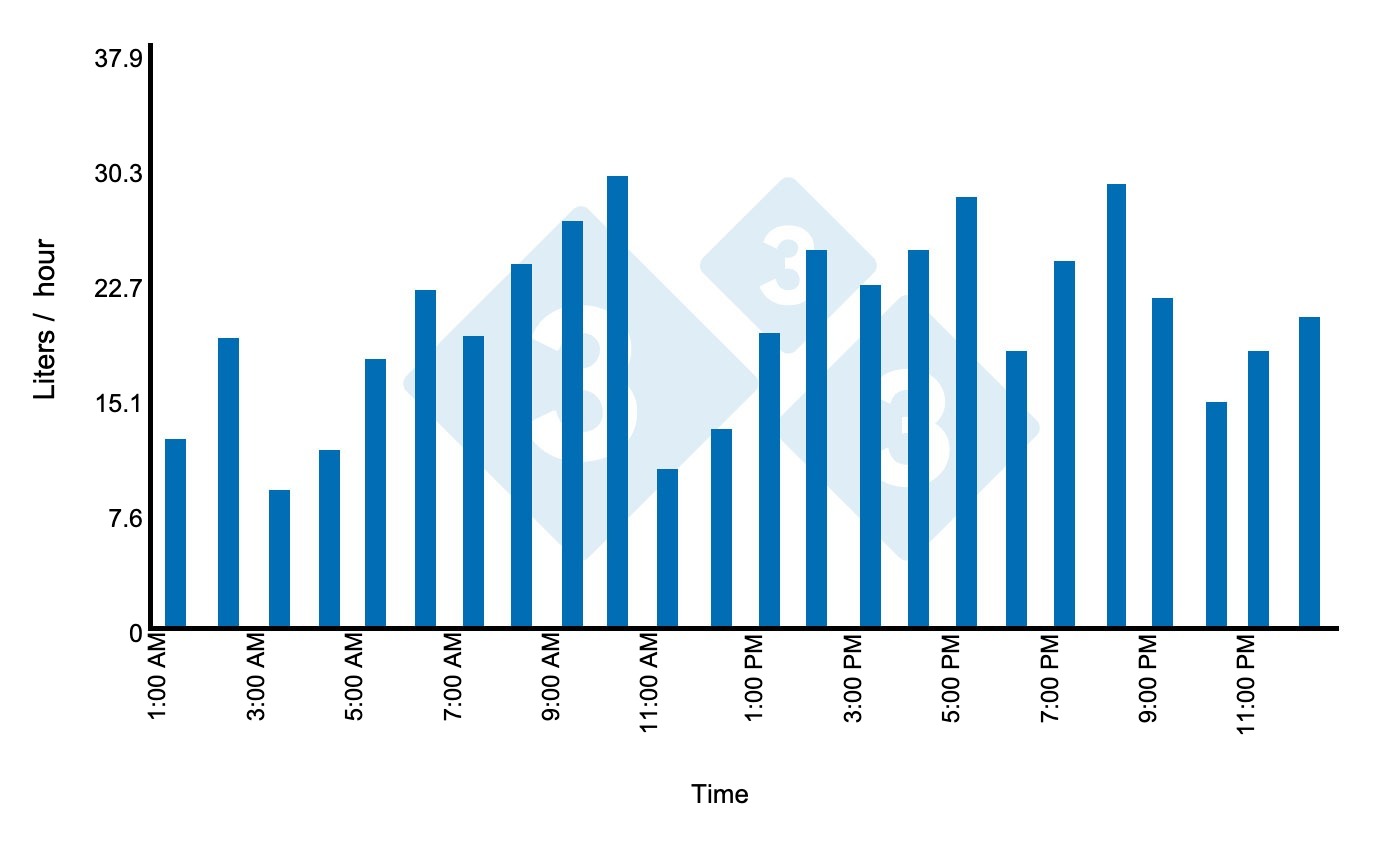
The amount of water consumed by lactating sows varies throughout lactation in a pattern parallel to milk production, with a peak at 3 weeks postpartum. The graph shows the daily water consumption of 2 lactations (Brumm, 2006).
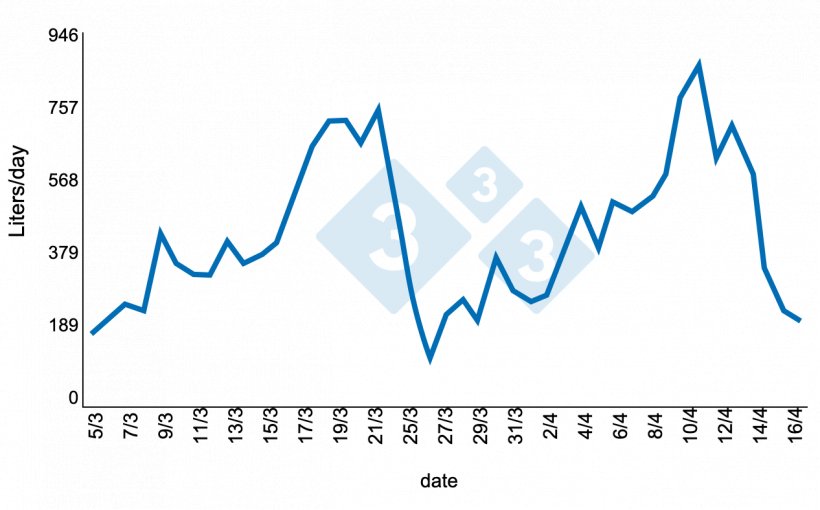
As we have seen, these patterns are normal, however, in field conditions, there are abnormal situations that can alter the normal pattern. By evaluating when the minimum and maximum consumptions happen, we can decide whether what is happening is normal or not, i.e. if there is any factor that is altering the normal pattern.
Another element to consider is the competition between the piglets at the drinker. If during the day they are competing for water, some piglets will drink when they should be sleeping. We can see in this work from Bird, 2001, in which the maximum demand (expressed in % of water consumption/day) increases only at the end when some piglets are removed from the pens to reduce competition.
